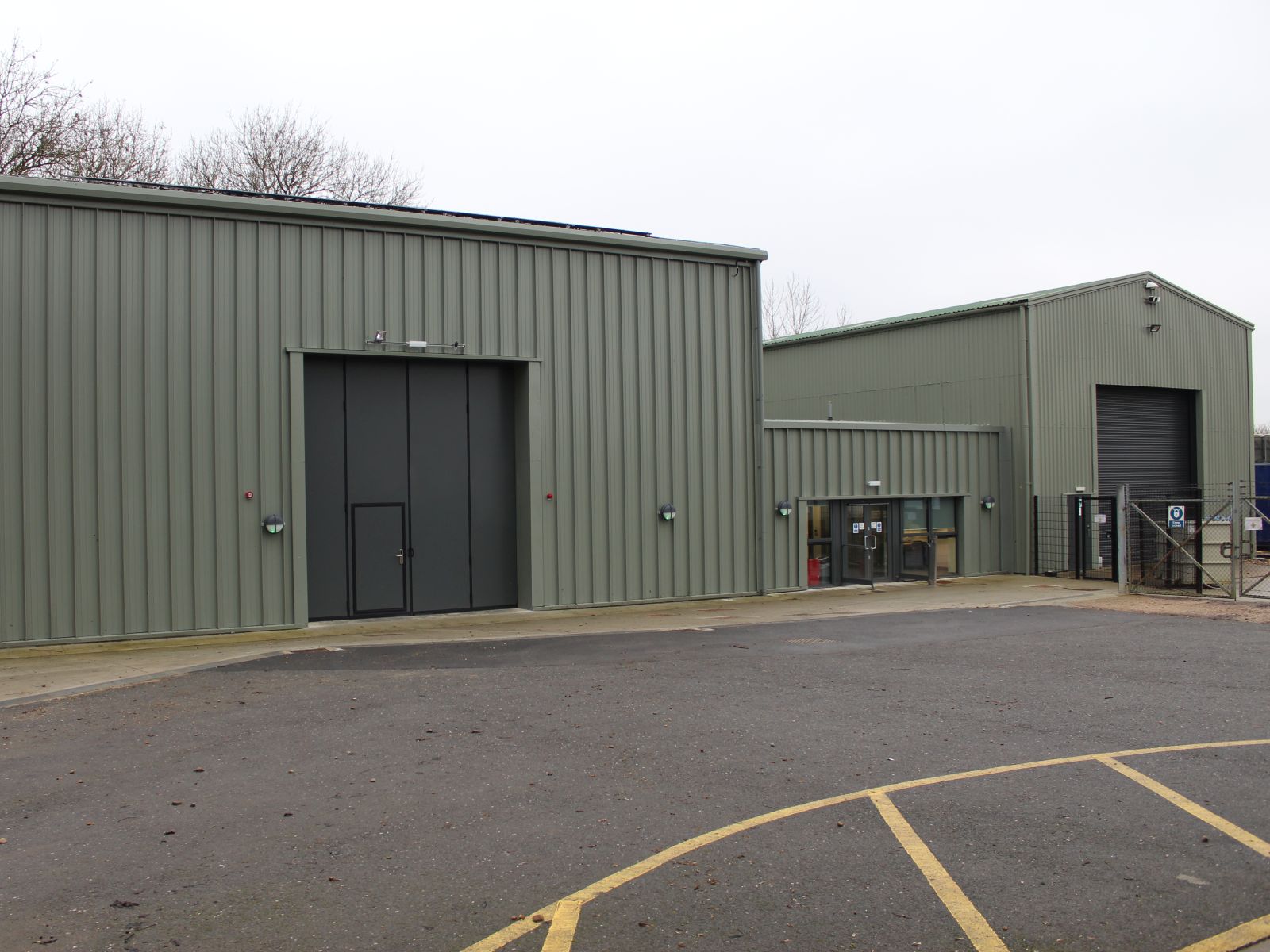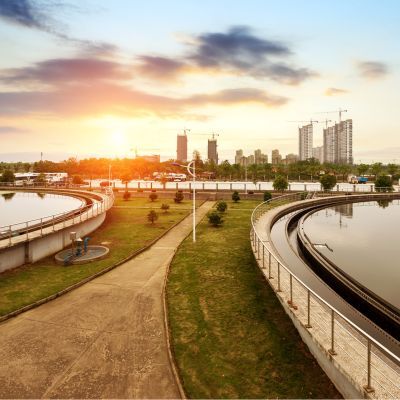Cranfield’s National Research Facility for Water and Wastewater Treatment provides a unique collection of at-scale testbeds to support research on pollutant removal mechanisms and resilient operation of both engineered and environmental water and wastewater systems.
Located adjacent to the University’s own wastewater treatment works, the two pilot halls (one for potable water and one for wastewater) and nature-based solution trial area can receive feeds from several sources. Each of the pilot halls has multiple bays in which treatment technologies can be installed and tested. The site also hosts a soil and sedimentation erosion test facility and test and control sewer loops.
Drinking water pilot hall
Technologies being tested in the drinking water pilot hall can use feedwater from a variety of sources, including:
- Water delivered in 1m3 intermediate bulk containers (IBCs);
- Surface water from the brook which runs alongside the facility;
- Water tankered onto site and stored in a 30m3 storage tank;
- Rainwater collected from the roof of the facility;
- Feedwater supplied from the wastewater pilot hall.
The hall is fitted with a 200 litres/hour test and control drinking water treatment rig, comprising coagulation, flocculation, clarification and filtration (granular media and membrane) processes as well as the ability to disinfect using chlorine, ultraviolet light or ozone.
Wastewater pilot hall
Pipework loops within the hall deliver wastewater to the test bays from four locations on the wastewater treatment works:
- Primary settled sewage from the campus (university and accommodation buildings);
- Effluent from the outlet of the primary Lamella clarifier;
- Effluent from the last trickling filter feed sump;
- Pre-discharge water from the final effluent sump.

Sewer loops
The two 100m long pumped sewerage loops (enabling test and control experiments) are constructed above ground and made of 100mm diameter pipework over bunded hard standing with access points for sampling.
The sewer loops rig is a highly versatile experimental facility that can be used to develop solutions for a variety of in-sewer processes and problems, including:
- Deposits or blockages management, control and remediation (e.g. fat, oil and grease or unflushable);
- Septicity and odour control and remediation;
- Biofilm formation and corrosion;
- Macro and micro pollutants in-sewer transformations;
- Monitoring and control systems (e.g. sensors development and testing);
- Innovative approaches or technologies for sewer systems (e.g. heat exchange/recovery, innovative/alternative materials, coating, bio-augmentation);
- Environmental impact and emissions (e.g. diffused greenhouse gas [GHG] emissions and control).
Soil and sediment erosion test facility
This is a unique facility in the UK. It was custom designed to quantify erosion thresholds and rates with depth in soil and sediment cores. Its modular and transportable design allows a variety of experimental setups, such as soil and sediment trays, and measurements conducted in the lab or field. It generates water velocities of 0.3-3.4m/s with variable flow depths to simulate shallow overland or deeper, submerged flow.
The equipment can be used to study the erodibility of cohesive sediment; scour assessment for coastal and riverine infrastructure; mobilisation of sediment and sediment-bound contaminants; erodibility of soil and assessment of stabilising function of plants; and testing of erosion-control geotextiles.
Nature-based solutions test area
To the rear of the pilot halls is an area dedicated to the testing of nature-based solutions (NbS) for water treatment and management. We currently have:
- Three pilot wetland cells, each 2.5x2.5x1m, that can be operated in vertical or horizontal flow mode, with built-in internal sampling ports. One of these is currently running treating settled sewage but can be fed with any of the effluent points from the sewage works;
- Seven wetland cells, each a 1m3 IBC, that can be operated in vertical or horizontal flow mode, with built-in internal sampling ports. This are currently running on crude sewage, but the influent can be tailored by switching the connection onto its dedicated feed tank;
- Three hybrid pilot wetlands, each consisting of a vertical flow wetland (0.5 m2) and a free water surface flow wetland (1x0.6x0.5m);
- Nine wetland mesocosms, each 168 L in volume, batch operated.
Each of the wetland pilots can be used to test conditions against a wetland control or benchmarked against the sewage works or pilot hall 'grey' technologies.
Access to the facility
If you are interested in using this facility, please contact Professor Peter Jarvis.



















